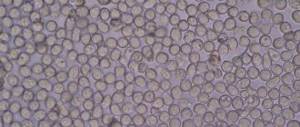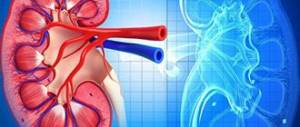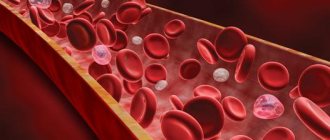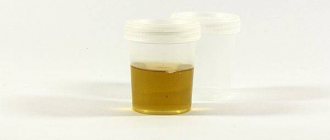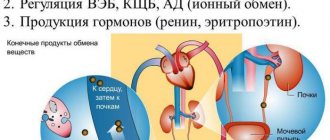What points should you pay attention to when choosing a medical institution and surgeon?
Depending on the location of the opening of the urinary canal, hypospadias is usually divided into:
- hypospadias of the penis;
- scrotal hypospadias;
- scrotal-perineal.
Penile hypospadias in children, in turn, is divided into the following forms:
- capitate;
- coronal;
- stem;
- penis-scrotum.
With capitate hypospadias, the opening of the urethra opens slightly below where it should normally be.
With this form of pathology, boys, as a rule, do not experience any discomfort when urinating, and the penis almost does not bend.
In most cases, surgical treatment is not used . Plastic surgery is used only if the external opening of the urethra is narrowed.
It is worth noting that boys with capitate hypospadias have an increased risk of developing specific forms of urethritis or genital warts . Some patients noted a disturbance in the act of urination, a decrease in the stream of urine or splashing, some had to urinate the female way (while squatting).
Naturally, such inconveniences can negatively affect the boy’s mental state . Such children are usually withdrawn, forcedly alienated from their peers. When they come to the clinic, they avoid other patients and prefer to discuss their problem alone with the doctor.
If we talk about a child in his first years of life, he is no different from his peers and may look absolutely healthy. In adolescence, during puberty, boys in some cases may experience problems with erection, and may also experience incomplete sexual sensations.
Symptoms
There are several signs of hypospadias in a child.
- With the disease, the external opening of the urethra is shifted to the side, and is not located at the top of the head of the penis. It may be located in the area of the coronary sulcus, shaft of the penis, scrotum or perineum.
- Almost always the pathology is noticeable visually. The doctor determines the degree of curvature during an erection or during surgery when performing an “artificial erection” test.
- The patient has dysplasia of the foreskin. The prepuce is split, located on top of the penis, hanging over in the form of a “hood”.
Often, congenital curvature of the penis is combined with other anomalies of the development of the genital organs: inguinal hernia, cryptorchidism, hydronephrosis, and so on. Before treatment, the child must have an ultrasound of the kidneys and bladder. Diagnostics will help to identify concomitant pathologies of the urinary system.
Causes of the disease
The nature of urethritis in children can be infectious or non-infectious.
Infectious sources of the disease:
- Staphylococcus;
- streptococcus;
- coli;
- herpes;
- ureaplasma;
- Trichomonas;
- gonococci and others.
Non-infectious factors in the development of urethritis:
- anatomical abnormalities of the urinary tract;
- hypothermia;
- violation of personal hygiene rules;
- wearing tight clothes;
- trauma to the urethra due to medical procedures (catheterization), falls, passage of stones, etc.;
- allergic reactions to foods, medications, detergents and other substances.
A sedentary lifestyle, which leads to congestion in the pelvis, can also become an impetus for the development of urethritis in children.
Treatment
The only effective treatment for congenital curvature of the penis in a child is surgery. It is aimed at:
- elimination of curvature of the cavernous bodies,
- formation of the missing section of the urethra,
- creating a normally located opening of the urethra,
- elimination of all cosmetic defects.
According to experts, the optimal age for surgery is from 6 months to 2 years. After surgery, sexual function is not impaired.
Specialists at the Andrologist03 clinic use various surgical methods to eliminate penile curvature in children. Surgeons have extensive experience and do everything possible to avoid complications and achieve excellent functional and cosmetic results. For more information please call.
Curvature of the penis in a child is a common pathology in the practice of a pediatric andrologist. It can be either congenital or acquired as a result of injury. It can manifest itself from the first days of a child’s life and intensify during adolescence, when the boy’s body experiences a physiological and psychological transition from childhood to adulthood.
Kinds
The disease is divided into types according to several factors.
Depending on the etiology:
- infectious specific - pathogens are gonococci, trichomonas, chlamydia, streptococci;
- infectious nonspecific is caused by enterococci, staphylococci, E. coli, protozoa;
- non-infectious develops as a result of injury to the urethra or allergies.
There are also two forms of infection based on the type of pathogen:
- gonorrheal - the causative agent is gonococci, transmitted sexually during early relationships or during childbirth from a sick mother to a baby;
- non-gonorrheal - caused by candida, trichomonas, chlamydia and other bacteria.
Based on the localization of the inflammatory process, three types are distinguished:
- anterior – with damage to the anterior wall of the urethra;
- posterior – the posterior wall of the canal is inflamed;
- total - the inflammatory process has spread to the entire urethra.
According to the course of the disease and clinical picture:
- acute form - lasts 10-12 days, has vivid symptoms;
- chronic form - develops two weeks after the onset of the disease and is a consequence of the lack of treatment for the acute stage, causing serious complications.
Only a doctor can determine the type of urethritis, based on the clinical picture of the disease and test results.
How to correct curvature during child development
It is believed that curvature of the penis in children can be corrected surgically. However, surgery in this delicate situation is actually plastic surgery, which requires a lot of strength and skill from doctors. What will it be like for a child who will have to go through a long - more than an hour and a half - operation and a long period of rehabilitation? Naturally, parents who are worried about their son’s health and want to see him as a confident man in the future are looking for a more gentle alternative to solving the problem.
Of course, in severe cases, surgery may indeed be inevitable. For example, surgeons are faced with a pathology of male genitalia - hypospadias, when a boy's penis in its appearance can resemble a clitoris, and the scrotum, even during the intrauterine development of the fetus, splits and becomes similar to the female labia. Such cases are explained by hormonal disorders and can only be corrected on the operating table, but, fortunately, they are rare. For congenital curvature of the penis, such aggressive intervention is usually not necessary: in this case, it is quite possible to limit oneself to alternative methods of correcting the shape of the penis. The Andro Ortez orthopedic device can be such a means of treating a crooked penis in a child.
Hypospadias is a fairly common developmental disorder in which the opening of the urinary canal is incorrectly located.
The disease occurs in the early stages of embryonic development .
The achievements of modern plastic surgery make it possible to treat abnormalities while preserving sexual and reproductive functions.
What are the different forms of hypospadias in newborn boys?
Patients with proximal forms of the disease, micropenia, or an impalpable testicle often require a special approach to treatment .
Such children may need to visit an endocrinologist, a geneticist, and conduct auxiliary examination methods to determine the karyotype to exclude violations of sex formation.
The following types of hypospadias are distinguished:
- Capitate - the opening of the urethra is on the head of the penis, but not in the standard place. This type of deviation is the most common. Basically the hole is just below the top of the head . Cases of curvature of the genital organ are rare.
- Coronary - the opening of the urethra is moved to the area of the coronary sulcus . The coronal type is characterized by disturbances in urination and the shape of the organ. Often when urinating, urine ends up on the legs.
- Stem - the opening of the canal is located on the underside of the genital organ . The penis is severely curved; in some cases, narrowing or stenosis of the urethral opening is detected. Patients have complaints about urination disorders, the flow is directed downwards, while the process in a standing position is significantly difficult, the curvature of the penis occurs with a turn to the side.
- Scrotal - the external exit of the urethra is concentrated in the scrotum area , the genital organ is small in size, in severe cases it looks like a clitoris. Emptying the bladder can only occur in a sitting position.
- Perineal - the external opening of the urethra looks like a wide funnel and is located in the perineal area , the penis is small and also strongly curved. The external opening of the urinary canal is extremely wide.
- Hypospadias of the chord type - the urine excretion channel is underdeveloped and short, its external opening is in a standard place , but the penis is deformed . There are embryonic scars around the canal, which increase the curvature of the corpora cavernosa. With excitement and during puberty, the violation of the form intensifies.
Diagnostics
Most often, hypospadias is diagnosed immediately after birth during an examination by a neonatologist. In severe cases, an ultrasound examination of the genital area is performed to determine the sex of the newborn. Chromosome analysis is often required to establish an individual karyotype. After diagnosis, consultation with a genetic specialist is necessary, since hypospadias is a characteristic sign of many genetic abnormalities.
Subsequently, a urologist or pediatrician conducts an examination to determine the extent and nature of urinary disorders. Ultrasound examinations of the genitourinary system, uroflowmetry, and endoscopic examinations of the urethra can be performed.
By what signs can the disease be identified?
The main sign of deviation is the abnormal location of the opening of the emission canal . The existing disease significantly complicates the process of urination.
With the capitate type of deviation, male representatives have to lift their penis upward in order to direct the stream of urine in the desired direction.
Often, with hypospadias, the underformed urinary channel has narrowings that greatly complicate the process: the stream of urine is thin, intermittent, and the procedure itself requires tension in the abdominal muscles.
Depending on the type of deviation and location of the urinary canal, a boy may have structural abnormalities of the penis :
- curvature,
- absence of corpus spongiosum,
- underformation,
- split head, etc.
The lower the urethral opening is, the more pronounced other developmental disorders of the genital organs appear.
When complaining of pain in the organs of the urinary system, diagnostics often determine the rate of leukocytes in the urine, thanks to which many diseases can be identified. Hydrocalycosis of the kidneys is a common disease. Why the disease occurs and how to treat it, read our article.
Why does hypospadias occur?
The causes of hypospadias have not been identified.
According to doctors, the following reasons favor the development of this deviation:
- Heredity is the main factor in the development of the disorder. The risk of a boy having hypospadias is greater in a family where the father also had this disorder.
- Hormonal disruptions during the period of embryonic development of the fetus . Normal development of the penis and urinary canal occurs only if there is a sufficient amount of male hormones in the baby’s blood. The deficiency causes disturbances in the structure of the genital organ, undescended testicles, and hypospadias. That is why the disease is often accompanied by undescended testicles.
- Taking female hormones immediately before pregnancy or in its early stages increases the risk of having a baby with a deviation. For this reason, boys with a deviation more often appear in mothers who were treated for infertility or became pregnant through modern technologies.
Doctors have determined that hypospadias develops at the 10th week of fetal development , when the urethral tube is formed from the urethral groove, its parts are connected and when the cavernous bodies are formed.
The provoking reasons for the appearance of deviations include hormonal disruptions and genetic deviations in the pregnant woman’s body, and the environmental situation.
Also, causes of the disorder may include rubella, flu, and taking hormone-based medications.
Scientists are inclined to believe that hypospadias appears more often in a baby if the mother used hairspray .
Concomitant pathologies and complications with hypospadias
The disease can be combined with abnormalities of the genitourinary organs :
- undescended testicle,
- hernia in the groin,
- kidney disorders;
- also with violations of other organs and systems.
Hypospadias may result from more severe developmental defects of the reproductive system .
need gender reassignment in early childhood . An ill-chosen treatment approach ruins the lives of patients and provokes family problems.
Forecast
Modern techniques achieve positive results in approximately 80% of cases. In this case, it is possible to restore the desired appearance of the organ and functional abilities.
Early correction of the pathology guarantees normal development of the penis, as well as the exclusion of psychological trauma in the boy. After the operation, until the growth and formation of the penis is completed, such patients continue to be observed by a urologist.
How to treat pathology?
The mildest form of this deviation is capitate. Quite often, if there is only a minor curvature of the penis, there is no need for treatment .
Surgery for hypospadias in boys is necessary if there is a narrowing of the urethral opening and if there is a severe deformation of the genital organ, which will provoke problems in the future with sexual activity, or sometimes it may simply be impossible.
Surgical treatment of the disorder is one of the most difficult operations in pediatric urology, which requires extensive experience and high professionalism of the doctor.
It is optimal to perform surgical treatment for children aged from six months to 2 years .
By the age of 4, the child begins to realize that he belongs to the stronger sex. Also, until the age of 2, the baby does not remember events that are related to the operation.
If the disease was not cured in early childhood, then treatment of the deviation can be carried out at any age . Surgery in both children and adults is performed under general anesthesia.
Surgery can be carried out simultaneously or in two stages .
The purpose of the operation : straightening the penis and restoring the missing part of the urinary canal. Creation of the correct shape of the genital organ is carried out by excision of scar tissue at the site of the missing urinary canal.
This makes it possible to create conditions for the proper development of the corpora cavernosa of the penis . If the procedure is performed in two stages, the first one is completed.
If treatment is carried out at one time, then the urethra is restored immediately.
With a two-stage process, the operation is performed up to 7 years . The material used to restore the missing section of the canal is the skin of the genital organ, the skin of the foreskin or the scrotum.
Occasionally, when the use of skin from nearby tissues is impossible, the appendix, part of the ureter, and a section of the bladder are used.
ureaplasty and distension methods are used as treatment methods .
The ureaplasty procedure often provokes the development of stenosis and fistulas .
Distension types of intervention are not so technically complex. At the same time, they restore the functioning of the penis and urinary canal, as well as the normal shape of the penis.
The main thing is that the operation should be carried out in early childhood , and this will make it possible to lead a full life in the future.



